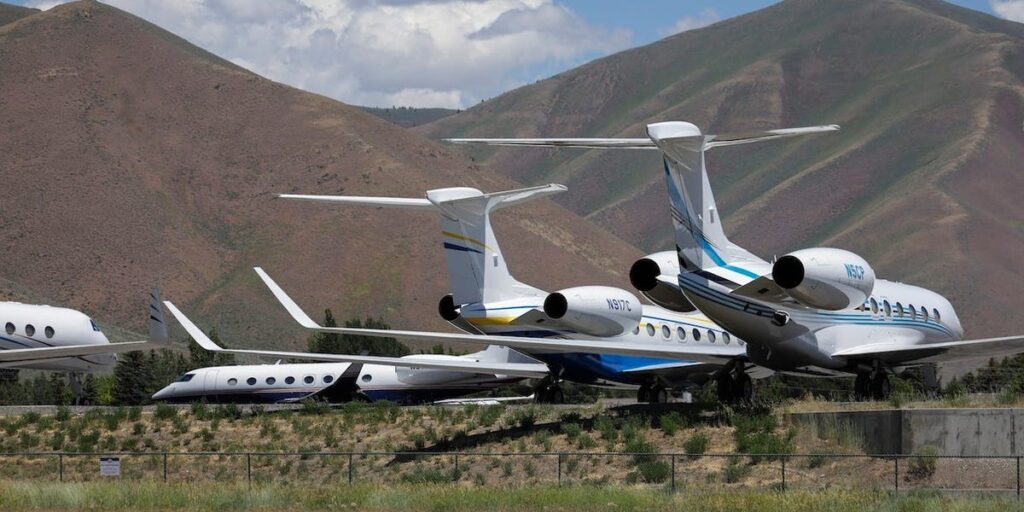- Private jet travel has surged in recent years, and two big changes explain why.
- The COVID-19 pandemic pushed many to opt for private planes.
- Meanwhile, more affordable options for on-demand private jets multiplied.
Flying private has gotten a lot more popular over the last several years.
The number of miles flown by private jets soared 53% between 2019 and 2023, while the number of private aircraft rose by 28%, according to a major new study published in Nature.
Two big factors led to that spike in private flights: The pandemic and a spate of more affordable options for flying private.
When the pandemic hit in 2020, both commercial and private flights ground to a near-halt. But soon, private jet travel surged even as commercial flying remained depressed.
While commercial airline ridership was down 27% in the US between 2019 and 2021, over the same period, business jet flights were up from about 3.8 million to about 4.4 million. Many of those who could afford to avoid cramped commercial airline cabins — and the extra exposure to the virus that comes with that — opted to charter or purchase a private plane.
Meanwhile, fractional ownership of private planes, fly-share services, subscriptions to private jet companies, and other on-demand private flying options have also grown much more popular and made private flying more accessible and affordable.
New services have made it possible to find and book private flights from a smartphone. While purchasing a private plane costs millions of dollars, on-demand private flying through newer services like Blade can charge as little as $1,700 to jet from New York City to Miami. That’s not much more than the nearly $1,000 price tag of a typical first-class commercial ticket between those two cities.
In the years since the COVID-19 outbreak, industry experts say customers have a higher budget for travel and are more willing to spend big to make it luxurious. These days, those who fly private say time savings and convenience are the biggest reasons, a recent survey of private fliers found.
Private jet usage peaked in 2022 and dipped slightly last year. But private travel was still 17% higher in 2023 than it was in 2019. This year, demand for private air travel has fallen a bit more as costs have risen. The industry expects the number of private aircraft will grow by almost a third by 2033.
The uptick in flights has led to soaring carbon emissions from private jets. The Nature study found that climate-heating emissions rose 46% between 2019 and 2023.
Private jets emit up to 14 times more climate-warming pollution per passenger than commercial planes, according to a report by the NGO Transport & Environment in 2021, largely because of smaller passenger loads and shorter flights.
The US is the biggest global hub of private aviation. While the US is home to about 4% of the world’s population, the Nature study noted that about 69% of private jets are registered here.
US taxpayers are heavily subsidizing private jet travel. Private jet travelers pay just two percent of the taxes used to fund the Federal Aviation Administration, despite making up one in six flights handled by the FAA’s air-traffic controllers, according to a report published in May 2023 by the Institute for Policy Studies and Patriotic Millionaires. Private jets also use almost 3,000 of the country’s smaller airports that aren’t used by any commercial airlines, but are funded in part by the FAA, the 2023 report found.
Read the full article here















